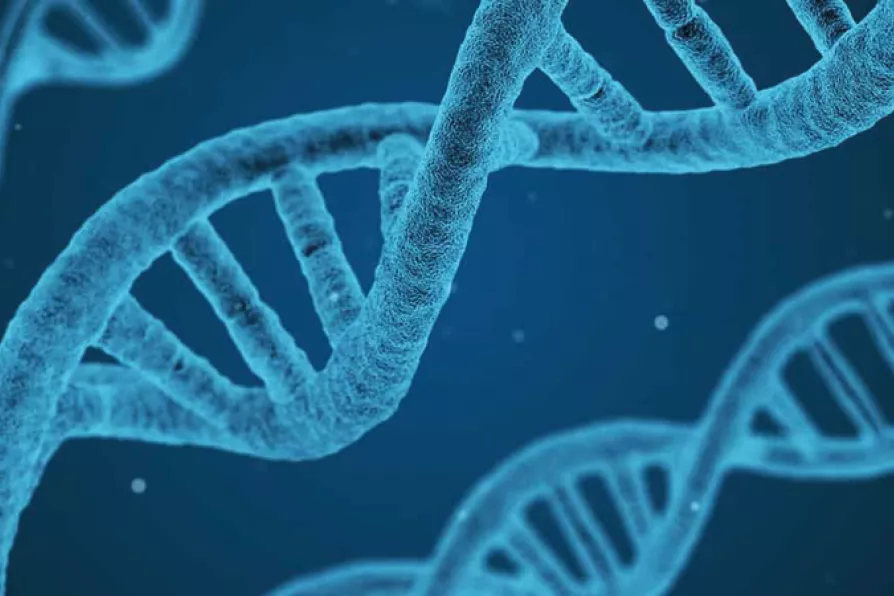As Labour continues to politically shoot itself in the foot, JULIAN VAUGHAN sees its electorate deserting it en masse


THE double helix structure of DNA was discovered in 1953, but at the time the structure of genes themselves remained unknown. But the term “gene” had already been in use for decades as a convenient term for the mysterious basic unit of heredity.
Writing in 1911, the Danish botanist Wilhelm Johannsen referred to the term as “nothing but a very applicable little word, easily combined with others.” Once it was understood that genes were made of DNA, new questions opened up.
In the 1950s and onwards, the only organisms that could really be investigated in detail were microorganisms. As a result, almost all early molecular biology was done on bacteria and their viruses.
A bacterial chromosome contains many genes. Escherichia coli, the most-studied bacterial species, has a circular chromosome that has thousands of genes, arranged one after the other.
Could it be possible to make a molecule of DNA that consisted of only one of these genes — in other words, to “isolate” a gene from the chromosome?
One of the most-studied groups of genes in this early period was the lac operon. An operon is a small set of neighbouring genes under the influence of a single molecular switch.
The lac operon contains genes that encode proteins that allow for lactose to be used as an energy source, allowing the production of these proteins to be turned on only when another sugar is not present. French scientists Francois Jacob and Jacques Monod won a Nobel Prize in 1965 for uncovering how this system of genetic regulation worked.
In 1969, scientists at Harvard managed to make a DNA molecule that contained only the lac operon and no other genes. To do this, they used two viruses of bacteria which, together with other genes, carried the lac operon in opposite orientations.
These could then be joined together to create a double helix molecule with only the lac operon on it. This meant they had isolated a small set of genes which could be entirely switched on or off with a single molecular switch, which allowed amazing possibilities for future experiments.
The team felt the findings were so important that they held a press conference to announce them. But unusually, this was not framed as a positive announcement: Jon Beckwith, the leader of the research, described the possible implications of their own work as “frightening.”
In a New York Times article on this “brilliant isolation of a gene,” appearing underneath a piece on dialogue between East and West Germany, scientist Jim Shapiro was quoted as saying that the work “may have bad consequences over which we have no control” — possibilities such as genetic warfare.
A graduate student involved wrote afterwards that “the only reason the news was released to the press was to emphasise its [the science’s] negative aspects.” The atmosphere Beckwith promoted in his group was unusual and came from his political convictions.
In the same year that the lac operon paper was published, he accepted the Eli Lilly award, a prominent award for microbiologists funded by a pharmaceutical company.
In his acceptance speech, he stated “science in the hands of the people who rule this country and who run our industries is being used to exploit and oppress people all over the world.”
He then donated all of the prize money to the Black Panther movement: one half of the prize money to the Boston Panther Free Health Movement and the other half to the Defence Fund for the Panther 21 in New York.
Beckwith knew that, unlike genes, science could never be isolated from its social and political context. The field that developed out of these discoveries already had a name by 1969: “genetic engineering.”
These days genetic engineering has become a huge field that involves applications, not just experiments in the lab. However, many of the crucial tools continue to be developed from microorganisms.
Viruses and bacteria deal with genes entering and leaving their genomes all the time. As a result, their evolution has produced many exquisite solutions for gene manipulation: recombinant DNA and CRISPR being two famous examples.
Gene therapy based on these tricks to deliver new genetic material into the human genome is already being used in clinical medicine.
With growing databases of known genomes, scientists can now search systematically for evolutionary solutions that might be adapted further for human genetic engineering.
In a Nature Biotechnology paper out this week, scientists from Stanford and Berkeley computationally searched through nearly 200,000 genomes to predict new enzymes belonging to a type known as “large serine recombinases.”
These enzymes can “recombine” DNA, meaning they integrate new DNA into specific sites in a genome — an ideal tool for genetic engineering.
They then experimentally tested these recombinases and their integration sites, they managed to increase the number of known enzymes and corresponding sites by over 100 times.
The scientists write in an understated way that their work has “potential clinical and research utility.” The new catalogue of recombinases does offer huge potential for gene therapy, replacing missing or mutated genes in very sick patients.
But genetic engineering also has risks. As the New York Times noted in 1969, it is nice to believe that the powers of science will be used only for benefit — but “every day’s newspaper provides evidence suggesting that the contrary may be true.” The political convictions of the lead scientist in 1969 made a huge difference to the understanding of the research in public.
The lead scientist, Patrick Hsu, is a founder of the Arc Institute, a non-profit but independent “research organisation” co-founded with scientist Silvana Konermann and the entrepreneur Patrick Collison, the CEO of payments company Stripe.
The aim of Arc is a new model of science funding to “get important discoveries into the public domain as quickly as possible.” The announcements from the Arc Institute are relentlessly positive.
But the nuanced message of Beckwith’s press conference during the beginnings of the field should stay with us as a warning: what happens after a scientific discovery is important. Responsible science means articulating risks as well as benefits.

The distinction between domestic and military drones is more theoretical than practical, write ROX MIDDLETON, LIAM SHAW and MIRIAM GAUNTLETT

Nature's self-reconstruction is both intriguing and beneficial and as such merits human protection, write ROX MIDDLETON, LIAM SHAW and MIRIAM GAUNTLETT

A maverick’s self-inflicted snake bites could unlock breakthrough treatments – but they also reveal deeper tensions between noble scientific curiosity and cold corporate callousness, write ROX MIDDLETON, LIAM SHAW and MIRIAM GAUNTLETT
Science has always been mixed up with money and power, but as a decorative facade for megayachts, it risks leaving reality behind altogether, write ROX MIDDLETON, LIAM SHAW and MIRIAM GAUNTLETT














